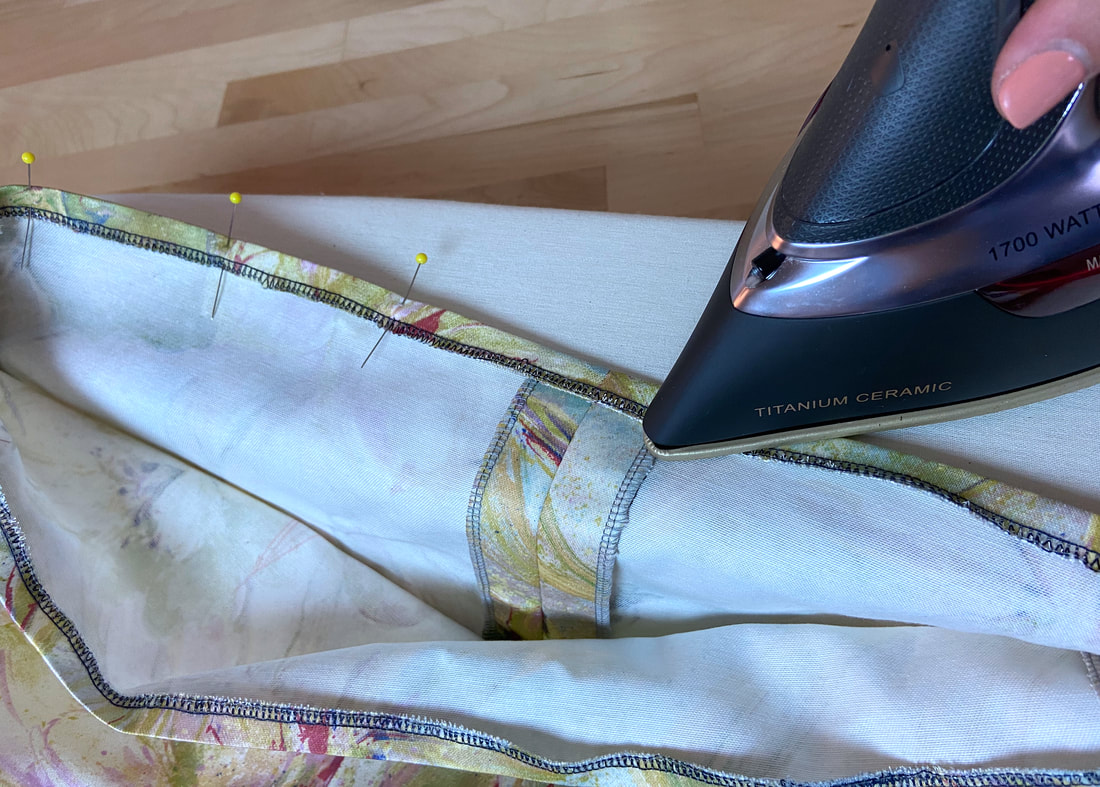Why You Should Use Serging When Finishing A Folded-Up Hem
When sewing a single-fold hem finish, it is important to encase the hem allowance edge with an overedge stitch like zigzag or serging (if you have an overlock machine). This extra measure will ensure that the fabric edge, which is left exposed on the inside of the garment, will not fray thus ensuring a clean, more durable finish.
Obvious as it may seem, it is easiest to apply the serging (shown above), or zigzag, to the fabric raw edge BEFORE folding the hem allowance in its finished position.
Obvious as it may seem, it is easiest to apply the serging (shown above), or zigzag, to the fabric raw edge BEFORE folding the hem allowance in its finished position.
Encasing the raw fabric edge as the first step in the application process will not only prevent the raw edge from fraying as it is being folded and secured with pins, it will also simplify the overall construction process. Why? The finish is applied prior to topstitching and sealing the hem's single fold. That being said, once the fold is permanently stitched, it will be very difficult to encase the raw hem allowance edge with an overedge stitch (serging/zigzag).
The sequence of these steps can sometimes confuse sewing beginners. For that reason, it is always good practice to think ahead in your application and anticipate what the final finish will look like and how it will function before you begin cutting and sewing.




